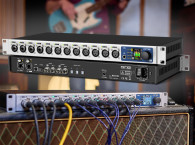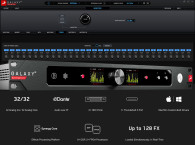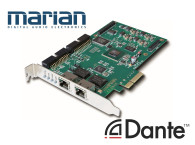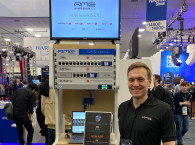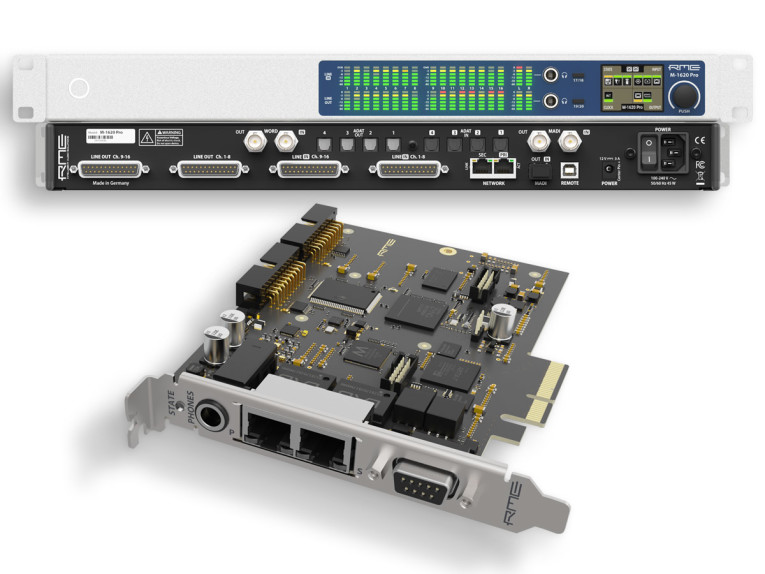
Occupying only a single slot, the PCIe x4 interface transmits and receives up to 512 channels of network audio signals on two separate gigabit Ethernet ports. The network audio channels can partially be replaced (or extended in case of the Milan version) with MADI signals by adding up to two optional dual optical SFP or dual coaxial extension cards. It is therefore possible to integrate four MADI input signals, four MADI output signals plus up to 256 network audio channels per direction within a single audio interface for the first time – on macOS and Windows.
In comparison to these massive channel counts, the 1/4" stereo headphone jack occupies a lot of space on the card – and for good reason, because it allows engineers to monitor any signal reaching the card: from the computer, the network, or the optional MADI inputs. And to add one more signal to the mix – a stereo AES3 digital I/O is available together with MIDI on a breakout cable, making it a versatile and full-fledged professional interface. A word clock input/output port is available on the MADI option cards.
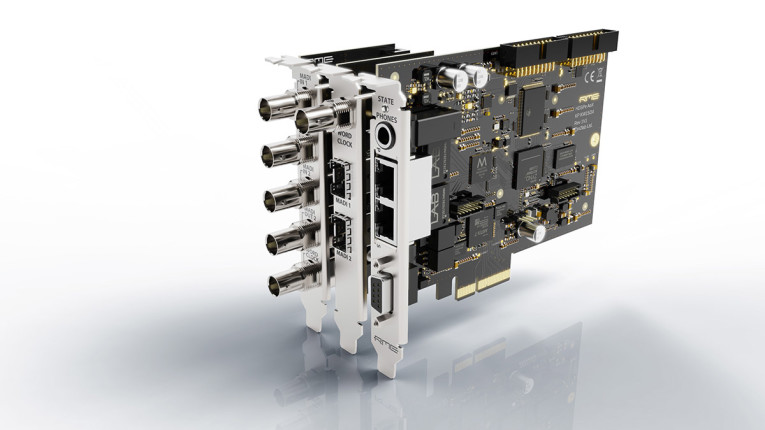
The vast number of channels can be managed by the user via the driver's software dialog, which includes a routing matrix that creates the connections between hardware I/O and software I/O, offering a lot of flexibility. First, the user selects which 256 channels to send to TotalMix, which provides powerful features such as level metering, preset management, layouts, sub-mixes, loopback and more. An additional 256 channels can be selected by the user to be passed straight through to the DAW, meaning a total of 512 channels are visible for recording.
Then, the user selects which channels – again 256 from TotalMix and an additional 256 channels straight from the DAW – should be sent to the card’s hardware outputs. Higher sampling rates are supported with corresponding reduction of channel count: half at 96kHz, a quarter at 192kHz, except for the Milan version that supports 128 channels at 96kHz and 64 channels at 192kHz.
Both cards can also be installed in external Thunderbolt enclosures as a perfect addition to mobile recording setups, or installed in common DAWs or audio processors.
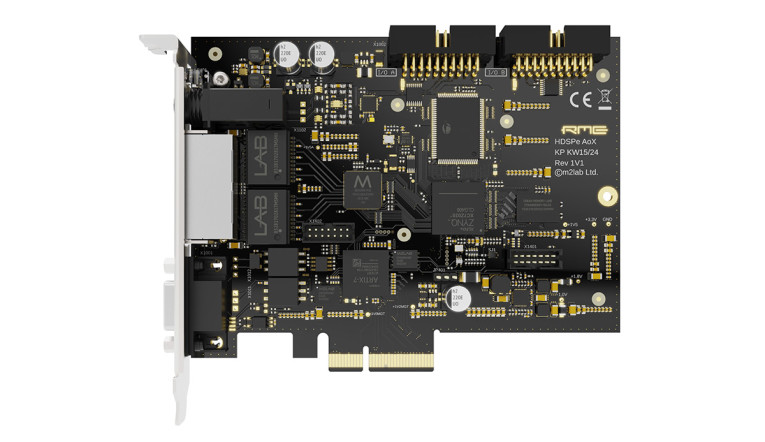
New RME M-1620 Pro and M-1620 Pro D Converters
RME also introduced the M-1620 Pro system that converts 16 analog line-level signals (per channel switchable up to +24 dBu) to and from MADI, ADAT, and either with Milan or with Dante networking technology (M-1620 Pro D). This unit is designed with a newly developed front panel that combines LED level meters with a display and includes two separate headphone outputs for monitoring - all within a single-height 19-inch rack device.
RME prioritizes reliability by equipping the M-1620 Pro with built-in redundancy. This includes dual network and dual MADI connections, along with a monitored DC input in addition to the internal AC power supply. A unique system clearly signals when an issue arises, ensuring seamless operation. With full stand-alone capability, users can adjust device settings directly on the unit for quick modifications or to recall entire user-defined presets.
The M-1620 Pro allows manual configuration of the converter’s aliasing filters for optimal impulse and frequency response. Jitter on digital input signals is effectively reduced with SteadyClock FS. And separate Word Clock BNC and coaxial MADI connectors, with optional optical MADI via an SFP module, allow the device to be easily integrated into existing infrastructure.
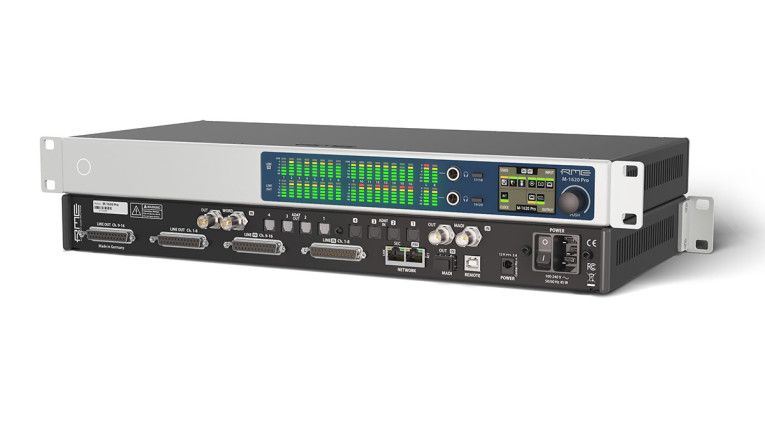
For situations that require connecting to AVB systems from Meyer Sound, L-Acoustics or d&b audiotechnik that now support the new Milan protocol, RME also offers a "Milan-certified" M-1620 Pro model that transmits and receives up to 128 channels at 48kHz (96 @ 96kHz, or 64 @ 192kHz) with fixed latency across these deterministic legacy networks. The system reveals its status and configurable options to controllers using the open IEEE 1722.1 (ATDECC) standard and is compatible with the new Milan Manager software unveiled by L-Acoustics and d&b audiotechnik at InfoComm 2024. The Milan Manager is the first solution that enables some sort of interoperability between these AVB systems that have always remained manufacturer-specific solutions.
RME also released its first Milan certified firmware that ensures seamless interoperability amongst devices of different vendors that supported the old AVB/TSN layer 2 networking technology and now have implemented the Milan protocol. With this update, RME ensures compatibility for its AVB-enabled products, including some that have been discontinued but have been receiving updates – reflecting RME’s long-term commitment to their customers.
In comparison to other more advanced layer 3 networking audio technologies (Dante, Ravenna), Milan - and the old AVB/TSN technology it is based on - requires dedicated switches to participate actively in time stamping and latency measurements, and to be aware of audio streams that pass between specific ports. AVB/TSN remains supported by a reduced number of semiconductor companies who originally saw potential for industrial applications and had high hopes that the automotive industry would chose it as a vehicle networking standard. Nevertheless, connected cars and software defined vehicles forced the automotive indudtry to move away from AVB, which reduces any hope of any future support, beyond legacy applications.
Both RME M-1620 Pro models feature a JSON-based API for full integration and remote control from either network port or USB. A web-based remote application offers convenient access to the 304x308 channel routing matrix (240x244 for M-1620 Pro D).
www.audioag.com | www.synthax.com
www.rme-audio.com




